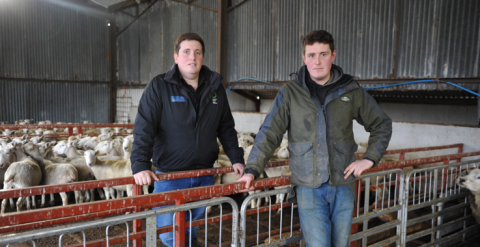28 March 2018
As soaring straw prices add to production costs on Welsh sheep farms, slatted housing can offer a solution but its advantages must be balanced against the initial outlay.
During a Farming Connect event at Nant Cornwal Farm, at Llansannan near Denbigh, where the Ellis family have installed a slatted floor in one of their sheep sheds, vet Phillipa Page said these systems reduce the amount of bedding required to house sheep but there are costs attached.
“They come with an initial investment cost but these may be spread by also housing and finishing store lambs on them at other times of the year,’’ she told members of the Pentrefoelas Discussion Group.
Slats can house pregnant ewes but they must only be used for ewes that are lambing if straw is also provided.
In December 2016 square-bale barley straw was approximately £45/tonne but by January 2018 it had doubled in price. But there are alternative bedding materials available and these are listed in publications produced by HCC, AHDB and others.
“Clean dry bedding is essential in the areas where ewes lamb and in the pens where ewes and newborn lambs are housed in the first 24-48 hours,’’ said Ms Page.
“Straw should be provided in ample amounts in these areas and possibly be reduced in other areas of the yard and the mixing yards.’’
Stocking at a reduced rate and fixing any leaking troughs and roofs will lower the humidity and moisture levels in the shed and lessen the amount of straw required, Ms Page added.
It is crucial that housed sheep are in excellent health with no signs of infectious disease because lameness, sheep scab, infectious eye disease and lice will all spread rapidly indoors.
If the flock is affected with lameness, effective treatment should always be undertaken promptly to limit the spread, advised Ms Page.
“On slats, the sheep can be stocked at a slightly higher stocking rate so infectious disease may spread even quicker and there should always be a straw-covered area for lame or ill sheep.’’
Slatted systems required adequate ventilation under the slats but not to the point where it causes a draught.
“Ammonia from the muck passed through the slats can build up if ventilation is limited, resulting in respiratory disease or eye irritation,’’ warned Ms Page.
Farmers should seek advice before investing in slats and consider how they will work for the flock, she added.
The event at Nant Cornwal was facilitated by Guto Owen, Farming Connect Development Officer for Conwy.

